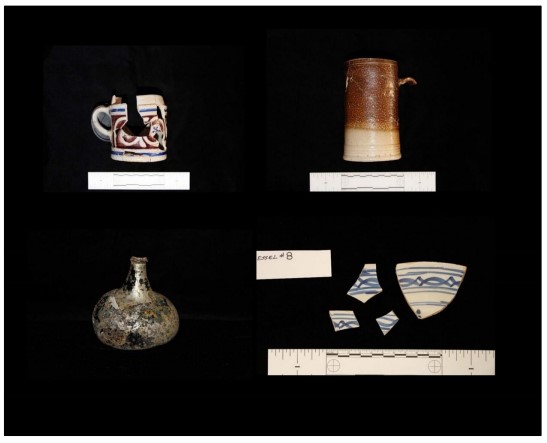17th-century life revealed at Avery’s Rest
An archaeological site known as Avery’s Rest that was first discovered in 1976 and made headlines in recent years as one of Delaware’s earliest discovered colonial-period grave sites is expanding the story it has to tell.

The site, located on land to the northwest of Rehoboth Bay near Rehoboth Beach, was full of artifacts when archaeologists first started exploring it decades ago. The site was listed in the National Register of Historic Places in 1978. For many years, it was used as farmland and didn’t face the threat of development. By the 2000s, archaeologists returned to explore the site, upon the request of the Delaware Division of Historical and Cultural Affairs, because the site was threatened by a proposed housing development. Fieldwork continued on different parts of the site for several years. Between 2012 and 2014, 11 unmarked human burials were discovered. After consultation in accordance with state law, in 2014, those burials were excavated and transferred to the Smithsonian Institution, which helped recover and analyze the burials, according to Daniel Griffith with the Archaeological Society of Delaware.
The Archaeological Society of Delaware has revealed in its latest Bulletin that those burials, which had been suspected to belong to the Avery family and at least three Africans also buried there, have also shed light on the larger happenings of 17th century colonial Delaware.
“The Avery’s Rest archaeological site provides a critical perspective on colonial lifeways and the history of the Delaware frontier,” wrote Raquel E. Fleskes with the University of Connecticut and Theodore G. Schurr with the University of Pennsylvania, in their “Initial Ancient DNA Investigations at Avery’s Rest: Update and Prospects” Bulletin article.
“To date, these individuals represent the earliest colonial individuals to be recovered in Delaware,” they wrote. “The presence of individuals of African ancestry is especially remarkable, given that the population of African individuals in Delaware was thought to be less than 500 individuals by 1700.”
Evidence from the Avery’s Rest site combined with other discoveries have allowed these experts to reconstruct what it was like, in part at least, to live in colonial Delaware as the area was transitioning from a frontier and undergoing tensions for sovereignty. At the time, there were ongoing disputes as to whether the area was part of Maryland or Pennsylvania. Delaware as we know it today did not yet exist.

Of the 11 individuals found, seven adults and an infant were of European descent and two adults and a child were of African descent. They were found in separate burial areas, about 15-20 feet apart.
“As a whole, our research demonstrates how [ancient DNA] can be used to deepen site interpretation by helping to identify the ancestry and relatedness of burials at colonial periods sites in North America,” the researchers wrote.
Avery’s Rest is a notable site because it was an early British colonial plantation from the 17th century, making it one of the earliest discoveries in Delaware. Archaeological discoveries at the site have also indicated Native American occupation of the site, and “an undocumented Dutch presence,” prior to the arrival of the English in the area. Other studies also have delved into a specific well on the property, possibly the earliest well ever excavated in Delaware.
Meanwhile, analysis of flora and fauna archaeological remains at the site indicate the presence of chickens, cows, pigs and fish, as well as a variety of plants and pollen — including carbonized maize and wheat. These findings shed light on how the occupants of the site used plants and animals, as well as what types. The studies done here have advanced researchers’ knowledge of human-plant relationships on the Delaware coast, the journal states.

“The legacy of Avery’s Rest and the history of Delaware counties is one of competing territorial claims that uniquely shaped its landscape,” the researchers found. “Avery’s Rest represents just one location and one family in Delaware’s history, but one that witnessed important transitions throughout the seventeenth century. In this way, the Avery’s Rest story is emblematic of the larger history of Delaware.”
To learn more about the Archaeological Society of Delaware, go to www.delawarearchaeology.org. To obtain the latest copy of the Society’s Bulletin, join the Society as a member, purchase a copy from the Society or call the Division to schedule a time to review a copy in person.
For more information on the archaeological findings at Avery’s Rest, check out the Division’s 2020 podcast “Avery’s Rest: An Introduction” and video “Avery’s Rest – A Look Into the DNA Investigations.”


